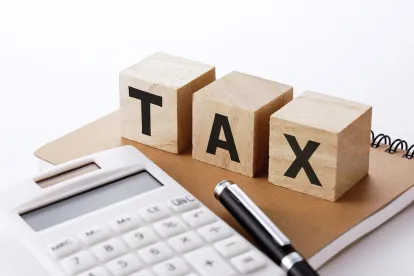President Biden signed into law the Inflation Reduction Act on August 16, 2022 (IRA). The IRA included a number of provisions to strengthen the investment tax credit (ITC) and production tax credit for wind projects (PTC).
Elimination of Phasedowns
Under prior law, the ITC and PTC were subject to a gradual, phased reductions of the applicable credit percentage, including elimination of the PTC for projects after 2021. For the PTC, projects that began construction after December 31, 2021, were ineligible for the PTC altogether, while projects that began construction after December 31, 2016, but before December 31, 2021, were allowed a “phased down” PTC, tied to the begun construction date.
Similarly, the ITC was set to phasedown from a 30% rate for projects that began construction before January 1, 2023, phasing down to a 22% rate for projects that began construction during 2023.
Under the IRA, solar projects beginning construction in 2022, 2023, and 2024 will be eligible for the full 30% ITC and will no longer be subject to the phasedowns described above.
For wind projects qualifying for the PTC, the IRA extends the construction commencement deadline to December 31, 2024.
It is important to note that for projects that were placed in service prior to 2022, the IRA does not retroactively change the credit rate available for those projects. Thus, projects placed in service in 2021 will remain subject to the phasedowns and will not qualify for additional credits. On the other hand, projects placed in service in 2022, including projects placed in service before passage and enactment of the IRA, may be able to take advantage of higher ITC and PTC rates and thus qualify for additional credits.
Eligibility of Interconnection Costs and Storage Property for ITC
Historically, the ITC was limited solely to costs (or, in a lease passthrough structure, value) associated with energy-producing equipment. Thus, interconnection costs have traditionally been ineligible for the ITC. However, the IRA expanded the definition of “energy property” eligible for the ITC, to include “amounts paid or incurred by the taxpayer for qualified interconnection property…”
“Qualified interconnection property” is defined by the IRA to mean tangible property (other than property associated with a qualified microgrid controller), which: (i) is part of an addition, modification, or upgrade to a transmission or distribution system which is required at or beyond the interconnection point; (ii) is either constructed, reconstructed, or erected by the taxpayer, or the cost of construction, reconstruction, or erection is paid or incurred by the taxpayer; and (iii) the original use of which commences with a utility pursuant to an interconnection agreement.
Additionally, batteries historically were only eligible for the ITC to the extent incorporated into an ITC project. Thus, standalone storage systems were traditionally ineligible for the ITC. However, the IRA amends the definition of “energy property” to now include certain “energy storage technologies,” defined generally as property that receives, stores, and delivers energy for conversion to electricity.
Transferability of Credits
The IRA now permits a one-time transfer of tax credits to a taxpayer who is not related to the transferor (within the meaning of Section 267(b) or 707(b)(1) of the Code), beginning in 2023. IRA further provides that amounts received as consideration for such transfer shall be excluded from the transferor’s gross income. A transferee may not further transfer the credits. Credits which are subject to a credit carryforward or credit carryback under Section 39 of the Code are not eligible for transfer.
Though the transferability rules provide for further flexibility, a number of significant questions remain, including the potential effects transferability may have on the tax equity market. For example, while the IRA clearly states that a credit may only be transferred once, presumably, this rule would not restrict a transferee that is a passthrough entity from further allocating the transferred credit to its partners or shareholders, but this issue is not specifically addressed in the IRA text.
While transferability provides additional flexibility in structuring investments and provides the potential to avoid exit costs associated with traditional tax equity investments, it is important to note that transferability may limit the amount of equity a project sponsor is able to raise. For example, pricing in the ITC space is driven, in large part, by the desire to monetize accelerated depreciation deductions. Thus, it is likely that traditional tax equity structures will remain prevalent in ITC transactions. On the other hand, the PTC, which is calculated based upon production rather than cost, is not dependent upon depreciation, and therefore is more likely to benefit from transferability.
Credit Carryforward/Carryback
IRA extends the existing one-year credit carryback period under Section 39 to three years, and the credit carryforward period from 20 years to 22 years. With respect to PTCs, this appears to apply only to qualified facilities placed in service after December 31, 2022.
New Sections 45Y and 48E
As noted above, the IRA extends the PTC until December 31, 2024, which effectively phases out the PTC beginning in 2025. The IRA similarly includes a phaseout for the ITC for projects that begin construction after 2024. However, the text of IRA includes new Code Sections 45Y (Clean Electricity Production Credit, or CEPTC) and 48E (Clean Electricity Investment Credit, or CEITC), which effectively replace the PTC and ITC beginning in 2025.
The CEPTC and CEITC each provide for a base credit along with an alternative rate if the project satisfies certain requirements.





 />i
/>i

